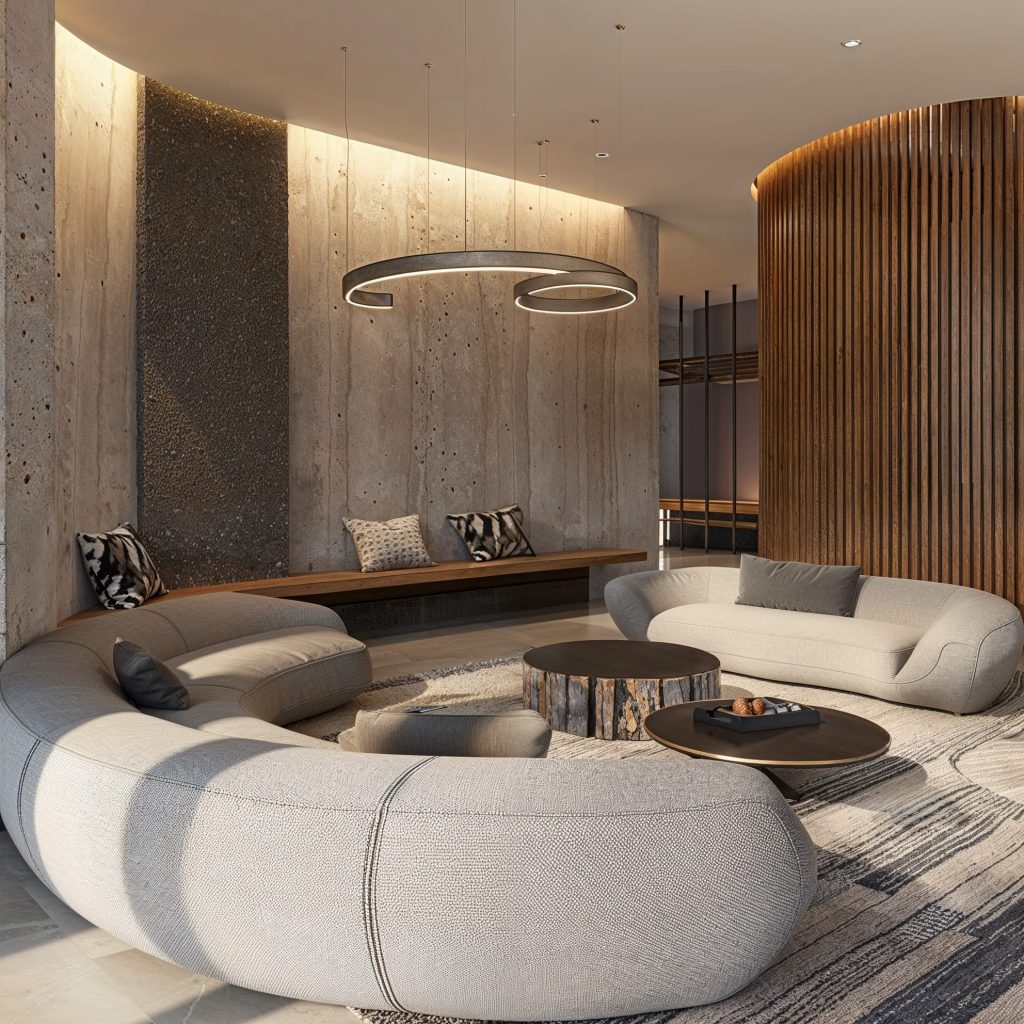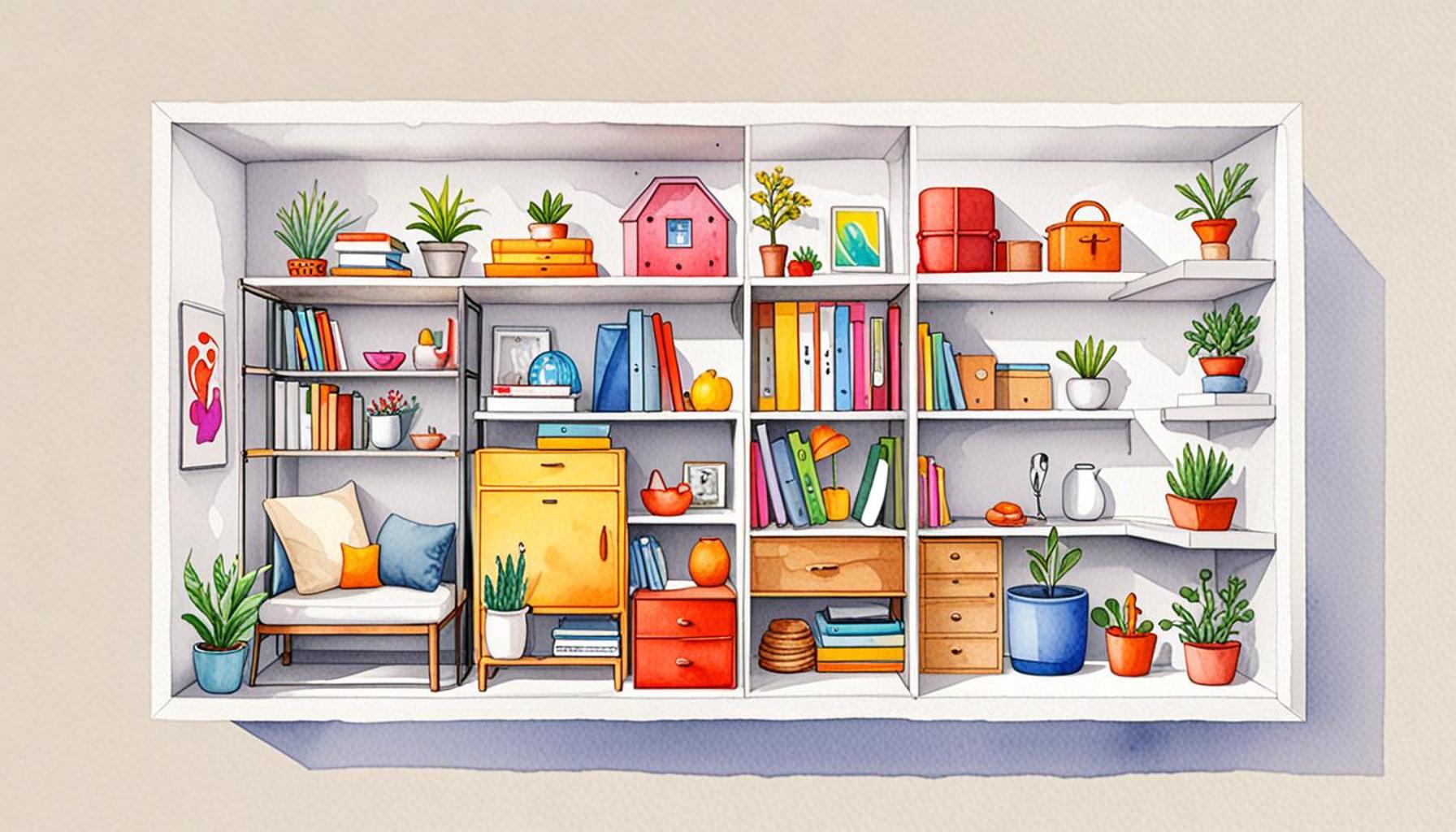The Transformation of Environments: How Space Optimization Can Facilitate the Adoption of a Minimalist Lifestyle

Embracing Minimalism
In a fast-paced world driven by consumerism, the journey towards a minimalist lifestyle offers a liberating and refreshing alternative. By prioritizing essentialism and stripping away the excess, individuals not only discover a newfound sense of personal satisfaction but also experience clarity that can enhance their daily lives. A pivotal aspect of this transformation is space optimization, which focuses on creating environments that are not just aesthetically pleasing but also highly functional.
The Growing Popularity of Minimalism
Several factors contribute to the rising popularity of minimalism. One significant driver is urbanization. As more people flock to urban centers in search of job opportunities and vibrant cultural experiences, living spaces often shrink in size. For instance, the average apartment size has decreased significantly in metropolitan areas like New York City and San Francisco, making space optimization a necessity rather than a choice. In many cases, maximizing limited space becomes essential for comfort and functionality.
Another aspect influencing the minimalist movement is a heightened environmental awareness. With growing concerns about climate change and sustainability, many individuals are opting for lives that reduce waste and consumption. This shift often entails purchasing fewer items, focusing on quality over quantity, and making sustainable choices—like thrift shopping or investing in timeless, durable pieces instead of fast fashion.
Moreover, the mental health benefits of minimalism cannot be overlooked. Studies show that decluttering can lead to lower stress levels, improved focus, and enhanced feelings of well-being. By simplifying one’s surroundings, individuals can create a peaceful sanctuary that fosters creativity and reduces anxiety. For example, cultivating a clutter-free workspace can enhance productivity, providing a clear mental state for tasks at hand.

Practical Strategies for Space Optimization
As we explore practical strategies for decluttering and maximizing the functionality of homes, consider a few essential tips. Start by employing the one-in, one-out rule, where for every new item that enters your home, an old one must leave. This practice not only prevents accumulation but also helps you stay mindful of your purchases.
- Multi-functional Furniture: Invest in pieces that serve more than one purpose, such as a sofa bed or a coffee table with storage. These items can help you make the most of limited space.
- Vertical Storage Solutions: Opting for shelves or wall-mounted storage can clear up floor space while providing a stylish way to organize your belongings.
- Regular Decluttering Sessions: Set aside time monthly to reevaluate your possessions, helping you maintain a minimalist approach in the long run.
By incorporating these strategies, individuals can embark on the path towards a more optimized living space that fosters efficiency and tranquility. Embracing minimalism not only transforms physical environments but also cultivates a mindset centered on simplicity and intentional living.
Join us on this enlightening journey as we delve deeper into the powerful tools and innovative ideas that make a minimalist lifestyle achievable. Discover how fostering simplicity can redefine your relationship with your home and space, ultimately leading to a harmonious life.
DIVE DEEPER: Click here to uncover how minimalism can enhance your daily goals
The Role of Space Optimization in Minimalist Living
As individuals increasingly seek to streamline their lives, space optimization emerges as a crucial component of the minimalist lifestyle. The essence of this approach involves not only reducing physical clutter but also enhancing the functionality of our surroundings. By adopting mindful design principles, individuals can create environments that resonate with simplicity, efficiency, and comfort.
The shift toward minimalism often starts with an assessment of one’s living space. For many, this means reevaluating how their homes are arranged and what items they choose to keep. A common starting point is understanding that every item in a home should serve a purpose. This leads to the concept of purposeful living, where excess is eliminated, and each object plays a vital role in daily routines. Decluttering is not merely about tossing out items; it’s about making conscious choices that reflect personal values and aspirations.
Understanding the Benefits of Space Optimization
The benefits of space optimization extend far beyond aesthetics. When individuals focus on maximizing their living areas, they often experience improved productivity and well-being. Here are some notable advantages:
- Increased Efficiency: An optimized space allows for easier access to frequently used items, reducing time spent searching for misplaced belongings. For example, keeping essential kitchen gadgets within arm’s reach can inspire more cooking and less reliance on takeout.
- Enhanced Mood: Decluttering and organizing spaces can create a sense of calm and order. This not only alleviates stress but also fosters a positive mental environment, making it easier to concentrate on tasks and enjoy downtime.
- Better Airflow and Natural Light: Removing unnecessary furniture and decor facilitates better airflow and light penetration, ultimately enhancing the overall ambiance of a space. A well-lit room can uplift spirits and create a welcoming atmosphere.
As individuals implement strategies to optimize their environments, they may also recognize the correlation between physical space and mental clarity. For instance, those who work from home often find that a dedicated workspace, free from distractions, leads to increased focus and stronger boundaries between work and leisure. This is indicative of how thoughtful space design can significantly influence one’s overall quality of life.
Cultivating a Mindset for Effective Space Management
To fully embrace the concept of space optimization, individuals must cultivate a mindset that values simplicity and intentionality. This involves adopting practices that reinforce a minimalist lifestyle, such as regularly assessing one’s belongings and being willing to let go of items that no longer serve a purpose. By developing this perspective, individuals can create living spaces that not only reflect their personal values but also inspire a greater sense of peace and fulfillment.
As we continue exploring the profound impact of space optimization on the minimalist lifestyle, stay tuned for innovative techniques and tools that can revolutionize your home experience. The journey towards a more intentional living environment is just beginning, and incorporating these strategies can lead to a life that is as organized as it is fulfilling.
| Advantage | Explanation |
|---|---|
| Enhanced Focus | By eliminating clutter, individuals can create an environment that promotes better concentration and productivity. |
| Lower Maintenance | Minimal spaces require less upkeep, allowing more time for personal interests and self-development. |
| Financial Savings | Streamlining possessions can lead to reduced spending on unnecessary items, promoting financial health. |
| Improved Well-being | A minimalist environment can reduce stress and anxiety, contributing to mental piece and overall happiness. |
The process of embracing a minimalist lifestyle through space optimization does not just enhance aesthetics; it creates profound shifts in daily living. For example, enhanced focus in a tidy environment helps individuals channel their energy more effectively, whether in work or personal projects. Additionally, individuals can enjoy lower maintenance, as fewer belongings mean less time spent cleaning and organizing, allowing for a richer engagement with life. Moreover, this transformation can lead to tangible financial savings since a decluttered mindset often translates to fewer impulsive purchases. Individuals begin making more informed decisions about what truly enriches their lives, fostering a culture of mindful consumption. Finally, by creating a serene atmosphere, individuals can experience improved well-being, cultivating inner peace amid chaotic external factors. Discovering the key principles of minimalist lifestyle offers a pathway toward not only a clean environment but also a fulfilled life.
DISCOVER MORE: Click here to learn about how digitalization can declutter your life
Innovative Techniques for Space Optimization
To fully harness the advantages of space optimization within a minimalist framework, individuals can turn to various innovative techniques that redefine how their environments are utilized. These methods not only enhance functionality but also contribute to an overall minimalist ethos. Below are some striking strategies that can transform any space into an organized, purposeful area.
Utilizing Multi-Functional Furniture
One of the most effective ways to embrace space optimization is through the use of multi-functional furniture. These adaptable pieces serve multiple purposes, allowing individuals to maximize the utility of their living spaces. For example, a sofa bed can transform a living room into a guest room, while a coffee table with storage compartments can eliminate the need for an additional shelving unit. This approach not only reduces clutter but also reinforces the minimalist principle of retaining only what you need and cherish.
Incorporating Vertical Space
In urban settings, where square footage is often at a premium, the ability to utilize vertical space becomes paramount. Wall-mounted shelves, hooks, and hanging planters encourage vertical organization, thereby freeing up valuable floor area. An intriguing trend is the use of pegboards in kitchens and home offices, allowing individuals to customize their layout according to changing needs while maintaining an uncluttered appearance. Vertical storage promotes a spacious atmosphere, making even the smallest of apartments feel more open and inviting.
The Power of Decluttering Rituals
As part of the minimalist lifestyle, engaging in decluttering rituals can significantly contribute to space optimization. Setting aside time each month to reevaluate possessions helps individuals remain mindful of what they own. This could involve the well-known “one in, one out” policy, where acquiring a new item necessitates parting with an existing one. By creating routines around this process, individuals can ensure that their environments stay purposeful and do not become cluttered again.
Digital Decluttering
In today’s digital age, space optimization extends beyond physical objects; it also encompasses our online environments. Digital decluttering is an essential practice that involves organizing files, unsubscribing from unnecessary emails, and eliminating apps that do not add value to one’s life. By creating a streamlined digital presence, individuals reduce mental clutter, allowing for clearer focus and productivity. Many advocate for a minimalist approach to technology consumption, suggesting that technological tools should serve only the most essential functions.
Smart Home Devices for Enhanced Functionality
Lastly, the integration of smart home devices can significantly enhance space optimization efforts. Voice-activated assistants can manage schedules, control lighting, and adjust the thermostat, reducing the need for additional gadgets and freeing up living space. Such technology aligns perfectly with a minimalist lifestyle, as it promotes efficiency, adds convenience, and reduces reliance on physical items. Not only does this shift contribute to a more organized environment, but it also reflects the values of innovation and simplicity.
As individuals explore these techniques, they uncover the transformative potential of space optimization within their homes. This process fosters a greater sense of control and purpose, inviting a minimalist lifestyle that resonates deeply with personal values and aspirations. The journey to optimizing one’s space is ripe with opportunities for discovery and growth, ultimately enhancing life quality.
DISCOVER MORE: Click here to learn how password management can simplify your life
Conclusion
In conclusion, the transformation of environments through effective space optimization offers a powerful avenue for embracing a minimalist lifestyle. By creatively utilizing innovative techniques such as multi-functional furniture, vertical storage solutions, and implementing regular decluttering rituals, individuals can reclaim control over their living spaces. These strategies not only minimize clutter but also foster a sense of tranquility and purpose within the home.
The concept of digital decluttering further extends the minimalist philosophy into the realm of technology, emphasizing the importance of mindful consumption in a world filled with endless digital distractions. This holistic approach to both physical and digital space reflects the need to prioritize what truly matters, leading to a more streamlined and fulfilling life.
As society continues to grapple with the overwhelming accumulation of material possessions, the shift toward smart home devices also signifies a commitment to simplicity and efficient living. These innovations not only enhance functionality but also align with the core values of minimalism, highlighting that a transformative lifestyle is well within reach.
Ultimately, those willing to embark on this journey of space optimization will find themselves not just organizing their spaces, but also enriching their lives. By embracing the principles of minimalism, individuals can cultivate environments that not only reflect their values but also nurture their well-being, paving the way for a clearer mind, a stronger connection to what they cherish most, and an enhanced quality of life. In this quest for a more meaningful existence, the transformation of our environments serves as a significant stepping stone towards achieving true liberation from the burdens of excess.



